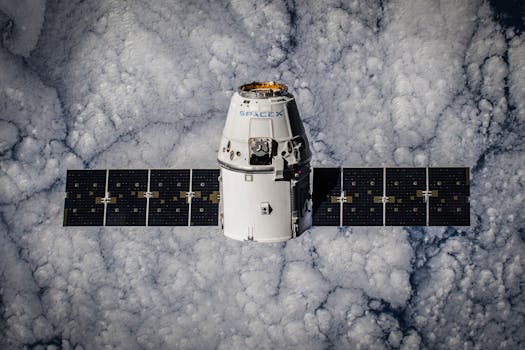
Satellite Telecommunications 2023: What’s New and What’s Next? – Focus Keyword: Satellite Telecommunications
Satellite telecommunications have undergone significant transformations in recent years, driven by advancements in satellite technology, increasing demand for global connectivity, and the need for reliable and secure communication services. As we move forward in 2023, it’s essential to explore the latest developments and future trends in satellite telecommunications.
The satellite telecommunications industry has witnessed tremendous growth, with the global market expected to reach $7.8 billion by 2027, growing at a Compound Annual Growth Rate (CAGR) of 9.8% during the forecast period. This growth can be attributed to the increasing adoption of satellite-based services, such as broadband connectivity, navigation, and Earth observation, across various industries, including aerospace, defense, and commercial sectors.
Advancements in Satellite Technology
One of the significant drivers of the satellite telecommunications industry is the rapid advancement in satellite technology. The development of new satellite constellations, such as OneWeb, Starlink, and Amazon’s Kuiper Systems, is expected to provide high-speed, low-latency broadband connectivity to remote and underserved areas. These constellations will comprise thousands of small satellites in low Earth orbit (LEO), offering unprecedented capacity and coverage.
Furthermore, the introduction of new satellite technologies, such as photonics and quantum communication, is expected to enhance the security and reliability of satellite-based communication services. For instance, quantum key distribution (QKD) will enable secure key exchange between satellites and ground stations, protecting sensitive information from interception and eavesdropping.
New Services and Emerging Applications
The satellite telecommunications industry is also witnessing the emergence of new services and applications, such as satellite-based 5G networks, IoT connectivity, and space-based Earth observation. The integration of satellite technology with 5G networks will enable the provision of ubiquitous connectivity, supporting a wide range of applications, including mission-critical communications, smart cities, and industrial automation.
In addition, the growing demand for IoT connectivity is driving the development of satellite-based IoT services, which will enable the connection of remote devices and sensors, supporting applications such as smart agriculture, logistics, and environmental monitoring. Space-based Earth observation is another emerging application, with satellites providing critical data and insights for climate monitoring, natural resource management, and disaster response.
Challenges and Future Outlook
Despite the significant advancements and emerging opportunities in satellite telecommunications, the industry faces several challenges, including regulatory hurdles, spectrum allocation, and cybersecurity concerns. The increasing number of satellites in orbit also raises concerns about space debris and the need for sustainable space practices.
As we look to the future, it’s clear that satellite telecommunications will play a vital role in shaping the global communication landscape. The development of new satellite technologies, services, and applications will continue to drive growth and innovation, supporting a wide range of industries and applications. As the industry continues to evolve, it’s essential to address the challenges and concerns associated with satellite telecommunications, ensuring a sustainable and secure future for this critical infrastructure.



